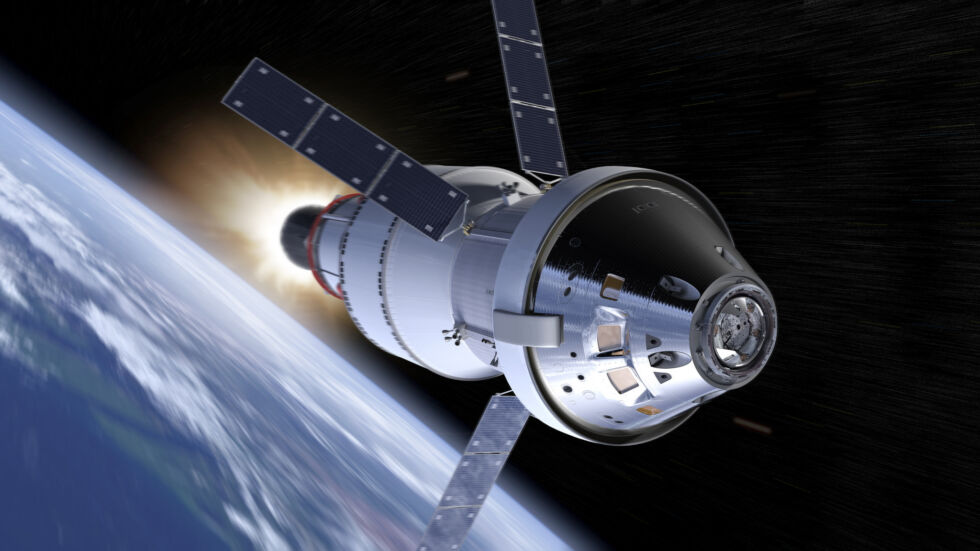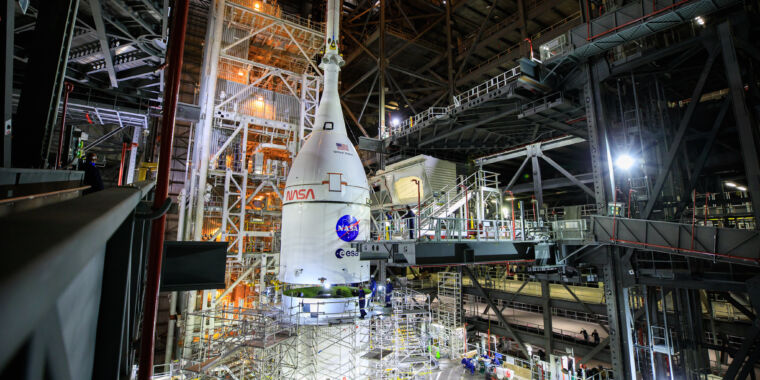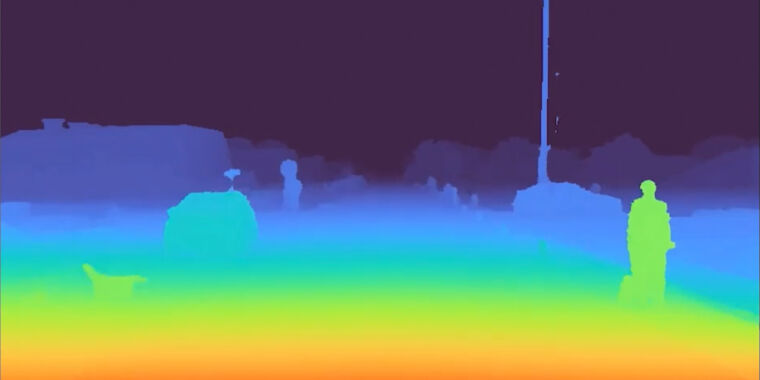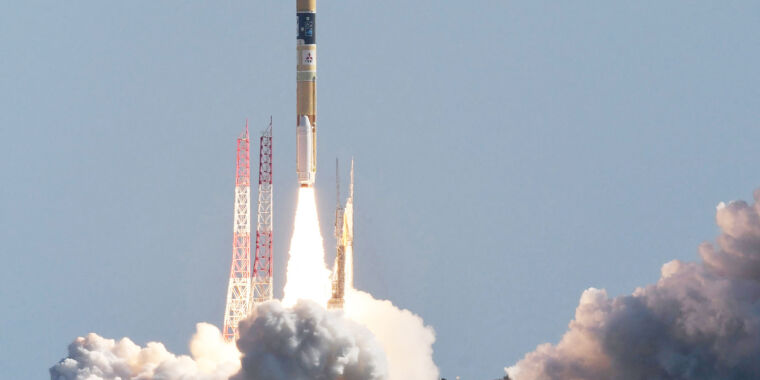
NASA
Last week NASA and its myriad contractors for the Space Launch System and Orion spacecraft reached a significant milestone—creating a full stack of the rocket and deep-space capsule for the first time. The completed launch vehicle stands an impressive 98 meters (321 feet) tall inside the Vehicle Assembly Building at Kennedy Space Center.
Although technicians and engineers still must put the rocket and spacecraft through a series of tests in the coming months, for the first time the agency discussed a possible launch window for the Artemis I mission. This launch, sending an uncrewed Orion spacecraft into orbit around the Moon and back, could happen as soon as a 15-day window from February 12 through 27.
Much, and more, has to go right for NASA to make that launch window. So it’s likely the Artemis I launch will slip further into the spring of next year. If serious technical issues are discovered, of course, the launch date could be delayed further. During a news briefing with reporters on Friday, launch officials reiterated several times that the rocket would not launch until the hardware was ready.
“There’s a series of activities we need to successfully complete,” said Tom Whitmeyer, deputy associate administrator for exploration systems development at NASA Headquarters. “We are dedicated as an agency to taking this a step at a time. We’re absolutely committed to taking it a step at a time.”
The major activities the launch vehicle must undertake include powering up the entire launch vehicle and spacecraft, rolling the stack out to the launch pad, performing a “wet dress rehearsal,” then returning to the Vehicle Assembly Building for the installation of some pyrotechnics for the actual launch, and then rolling back to the launch pad.
All of these will be new activities, so some technical issues are likely to occur. The wet dress rehearsal will provide the most dynamic test of the launch vehicle in terms of its hardware, the new ground systems at Kennedy Space Center, and software for the integrated vehicle. During this test the vehicle will be fully fueled with liquid hydrogen and liquid oxygen and a countdown performed to about T-10 seconds. The interfaces between the rocket, spacecraft, and ground systems haven’t been tested in this manner before, and historically this is where issues have occurred with new vehicles.
Following successful completion of the wet-dress test, which is presently scheduled for “early January,” NASA will be in a better position to set a launch date for the Artemis I mission with confidence.
However, the Artemis I mission manager, Mike Sarafin, did discuss potential launch windows for the vehicle. Essentially, he said, there will be about a two-week period when it is possible to launch on a lunar trajectory, and two weeks off. This is because there is a requirement for Orion to splash down in the daytime so that good data can be acquired. After the February launch window, which opens on February 12, the next two-week window opens March 12, followed by one opening April 8.
The overall goal of this mission will be to test the SLS rocket for the first time in flight and demonstrate Orion’s capability to return to Earth under lunar reentry conditions. Depending on the launch date, the mission will either last four or six weeks.

NASA
By completing the stacking of the rocket, NASA has demonstrated that it is in the homestretch of finally launching a rocket that was originally supposed to launch in late 2016, but which has experienced costly and prolonged delays.
However, NASA is not there yet. The agency must be careful with this rocket because its next SLS vehicle will probably not be ready for flight for about two years, and if there is a catastrophic failure with this launch it would raise questions about the future of the program as much cheaper, privately developed heavy lift rockets begin flying.








